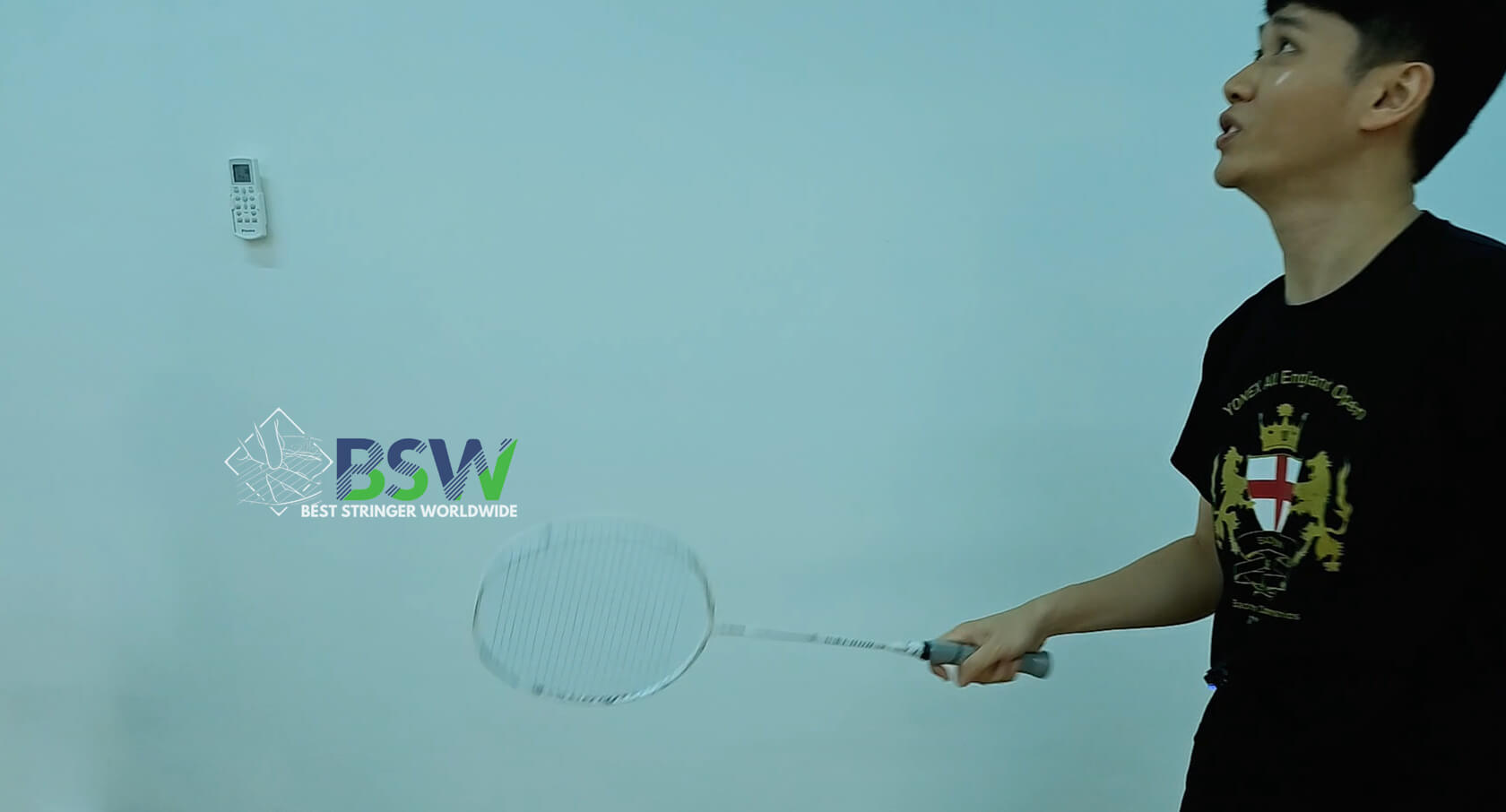Welcome to the Stringing University, brought to you by Best Stringer Worldwide (BSW). In this educational guide, we’ll delve into the fascinating world of racquet balance and its significant impact on your badminton game. Whether you’re a player looking to optimize your equipment or a stringer aiming to enhance your craft, this comprehensive exploration will provide valuable insights into the science behind racquet performance.

Interactive Learning Tools
To help you better understand and apply these concepts, we’ve prepared some interactive tools for you to explore:
1. Racquet Balance Quiz
Test your knowledge of racquet balance concepts with this interactive quiz. It’s a great way to reinforce what you’ve learned and identify areas where you might want to study further.
Racquet Balance Quiz
2. Racquet Balance Simulator
Racquet Balance Simulator
Experience the concept of racquet balance firsthand with our interactive simulator. Adjust the balance point to see how it affects the racquet's characteristics and feel. This tool provides a visual representation of head-heavy, balanced, and head-light configurations.
3. Racquet Balance Comparison Table
| Balance Type | Balance Point (from handle) | Power | Control | Maneuverability | Suitable for |
|---|---|---|---|---|---|
| Very Head-Light | 28-29 cm | Low | Very High | Excellent | Defensive specialists |
| Head-Light | 29-30 cm | Moderate | High | Good | All-round players |
| Balanced | 30-31 cm | Moderate | Moderate | Moderate | Versatile players |
| Head-Heavy | 31-32 cm | High | Moderate | Fair | Offensive players |
| Very Head-Heavy | 32-33 cm | Very High | Low | Poor | Power hitters |
This table provides a quick reference for understanding how different balance points affect racquet characteristics. Remember that these are general guidelines, and individual racquets may vary based on their overall design and construction.
4. Racquet Balance Simulator
Select a balance type to see its characteristics.
The Fundamentals of Racquet Balance
Racquet balance refers to the distribution of weight along the length of a badminton racquet. This seemingly simple concept plays a crucial role in determining how a racquet feels and performs during play. Two racquets of identical weight can feel remarkably different when held, primarily due to variations in their balance points.
Head-Heavy vs. Head-Light Racquets
Racquets are generally categorized into two main balance types:
- Head-Heavy: The balance point is closer to the racquet head.
- Head-Light: The balance point is closer to the handle.
The balance point is typically measured in centimeters or inches from the bottom of the handle towards the racquet head. This measurement provides a quantitative way to compare the balance of different racquets.
The Impact of Balance on Performance
Understanding how balance affects racquet performance is crucial for both players and stringers. Let's examine the characteristics of head-heavy and head-light racquets:
| Characteristic | Head-Heavy Racquets | Head-Light Racquets |
|---|---|---|
| Power | Higher | Lower |
| Maneuverability | Lower | Higher |
| Swing Speed | Slower | Faster |
| Control | Moderate | Higher |
| Vibration Transfer | Lower | Higher |
| Suitable Playing Style | Offensive, power players | Defensive, control-oriented players |
Head-heavy racquets offer increased power due to their longer lever arm and greater head inertia. This design is particularly beneficial for offensive players who prioritize powerful smashes and drives. However, the trade-off is slightly reduced maneuverability, which may affect quick exchanges at the net.
Conversely, head-light racquets excel in maneuverability and control. They allow for faster swing speeds and rapid changes in direction, making them ideal for defensive players and those who rely on quick reactions and precise shot placement. The downside is that they generate less power and may transmit more vibration to the player's arm.
The Hammer Analogy
To better understand the concept of racquet balance, consider the familiar tool of a hammer. A hammer with a heavy head and light handle (analogous to a head-heavy racquet) is more effective at driving nails into a wall. The concentration of mass at the striking end increases the impact force. On the other hand, a uniformly weighted rod (similar to a head-light racquet) is easier to maneuver but less effective for heavy hitting.
This hammer principle has indeed influenced racquet design, as engineers have applied similar concepts to optimize racquet performance for different playing styles and preferences.
The Interplay Between Weight and Balance
It's crucial to understand that racquet balance and overall weight are interconnected factors that collectively determine a racquet's on-court performance. When selecting or customizing a racquet, one must consider both aspects together rather than in isolation.
Generally, lighter racquets tend to have more head-heavy designs to maintain power and stability. Without this weight distribution, a light racquet might twist excessively when the shuttle doesn't hit the sweet spot. Heavier racquets, being inherently more stable and better at absorbing vibrations, often feature more head-light designs to prevent them from feeling unwieldy during play.
This relationship means that players can't simply choose a head-heavy or head-light racquet without considering the overall weight. A head-heavy design in a light racquet might feel quite different from a head-heavy design in a heavier racquet. Finding the right balance involves considering your playing style, physical strength, and personal preferences.

About Best Stringer Worldwide
Best Stringer Worldwide is a comprehensive badminton and tennis stringing education program. We provide in-depth training on stringing techniques, racquet technology, and player-specific customization. Our curriculum is designed to help stringers understand and meet the needs of all badminton players, from casual enthusiasts to competitive athletes.
Read More